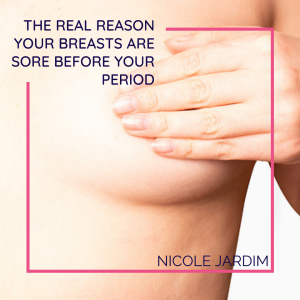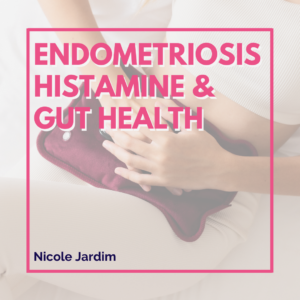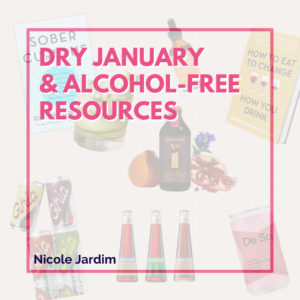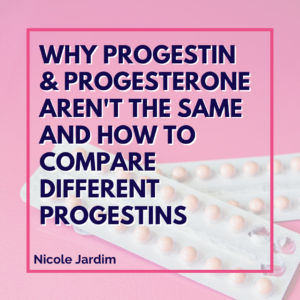So many of my clients ask, why are my breasts sore right before my period?
Breast pain—whether it’s breast tenderness, a sharp, burning pain or a tight feeling—is something up to 70 percent of us will experience in our lifetimes.
For those lucky few who have never had breast soreness, here are a few of the notable descriptions I’ve gotten from clients…
“When I jog it feels like I’m being punched by Mike Tyson!”
“My boobs feel like sand bags!”
“Every nerve in my body seems to be focused entirely on the area around my nipples!”
“When I take my bra off it feels like someone tied weights to my boobs and threw them off a cliff!”
Sounds pretty bad, huh?
Breast soreness, swelling, nipple pain and breast lumpiness can usually occur anywhere from right after ovulation to just before your period begins. But most women experience it between 7 and 14 days before their period starts.
Unfortunately, these symptoms are generally considered by the mainstream medical community to be normal. The thing is, just because most women suffer from it does not mean it’s “normal.”
I consider breast pain or lumpy breasts to be a “menstrual cycle red flag”, meaning they are indicative of an underlying nutritional deficiency and/or hormonal imbalance that can be corrected.
Let’s take a close look at what causes breast pain and soreness and the steps you can take to make painless boobs a thing of the past!
What Causes Breast Pain?
Throughout our cycles, our breasts are constantly being influenced by the changing levels of our sex hormones, estrogen and progesterone. Estrogen in particular, has a stimulatory effect on breast tissue.[1]
In the first half of the cycle, estrogen is produced by our ovaries which begins to stimulate the growth of milk ducts in our breasts. After ovulation, estrogen drops and progesterone takes center stage, stimulating the development of milk glands to prepare for the production of your baby’s first food, if you were to become pregnant.
When you are ovulating consistently and estrogen levels are in tune with progesterone levels, these changes are controlled and can go, more or less, unnoticed.
However, if your hormones are out of balance – there’s an overproduction of estrogen in relation to its sister hormone progesterone, a phenomenon known as estrogen dominance or estrogen excess – your breast cells become overwhelmed and this can manifest as some real pain-the-boob symptoms.
What Is Estrogen Dominance or Estrogen Excess?
The way hormones like estrogen stimulate the cellular changes in our breasts is by binding to receptors in the breast cells themselves.
Without these receptors, estrogen would have virtually no effect whatsoever on your breasts. Since the rise and fall of hormone levels is not an exact science, our bodies have evolved to be able to maintain control of these levels by increasing or decreasing the number of receptors that the hormones can bind to.
In our breasts, the way this is done is by using a chemical that competes with estrogen. That chemical is iodine.
The Link Between Iodine, Estrogen and Breast Pain
Iodine has two important roles in the maintenance of estrogen levels in the breasts. First, it is capable of binding to the estrogen receptors of the cells in the breast ducts, thus preventing additional estrogen from being able to interact with these cells.
Second, it stimulates the genes responsible for estrogen detoxification and thus helps in the removal of estrogen from our bodies – it’s important to know, estrogen is a “use it and lose it” hormone. Once it’s been used by the body, you it gone.
While breast soreness is usually a sign of estrogen dominance or excess, the cause of this is quite often due to iodine deficiency![2] In fact, I can safely say that if you are experiencing premenstrual breast pain or breast-related symptoms there’s a pretty good chance that you are iodine deficient.[3] Of course, this isn’t the only reason, but it’s a safe place to start.
An Easy Way to Relieve Breast Pain
An iodine supplement or consuming iodine-rich foods can help resolve your breast pain within a matter of weeks in many cases.
It is SUPER important to understand that if you have Hashimoto’s/autoimmune thyroiditis or you’re on thyroid medication, be very cautious with iodine because it may worsen the autoimmune impact on your thyroid, especially in the case of selenium deficiency. Please consult your doctor before adding in iodine-rich foods or supplements and if you choose to add them in, I recommend doing it under medical supervision.
If you’re unsure about your thyroid health, I recommend getting a full thyroid panel done to get a complete picture of how your thyroid is performing. The Thyroid Plus Test from Lets Get Checked is a great at home thyroid test you can take. Be sure to use code Hormones20 to get 20% off the price of the test.
I explain more about thyroid testing in this post and include the functional/optimal ranges for your test results.
Here are three ways you can get more iodine. I suggest trying one at a time to see if it works.
#1 Dietary iodine
You can get iodine from food, which is what I recommend as a first step. The best sources of dietary iodine are sea vegetables, ocean fish, eggs, raw dairy, and strawberries. Consuming sea vegetables like Kelp, Kombu and Wakame will likely be most effective to support your iodine levels. This is possibly why Japanese women have a lower incidence of breast cancer.[6] You can add a 1-inch square piece of kombu to any meal, and wakame goes well in soup or broth. You can try dried kelp in the same way as the kombu, use kelp granules as a seasoning or kelp powder in a smoothie or soup.
#2 Iodine Supplementation
When it comes to supplementing, it appears that molecular iodine works best for breast pain and swelling.[4] There is a brand of iodine called Violet Iodine specifically marketed for reducing all the breast troubles one might experience during the premenstrual phase of their cycle.
I’ve heard multiple accounts from clients that it works for them so I’d recommend it, but with caution. The Violet dosage is 3000mcg which is high! When it comes to iodine supplementation, I’d recommend no more than 300mcg a day. So if you try the Violet brand, I suggest breaking the tablet up into tenths. Not easy because it’s small, but it’s better to start with lower doses and work your way up. If you take too much, especially if you are quite deficient, you may experience anxiety and even feelings of panic. I know because it happened to me!
#3 Rub iodine onto your breasts
Another suggestion that I’ve tried and works well is to apply (massage into your skin) 2-3 nascent iodine drops where you have breast pain – on your nipples or on your entire breast – in the morning for the first two weeks of your cycle. See if you notice any improvement in your symptoms during your next cycle. If not, continue for 2-3 cycles and if you don’t notice improvement, try steps 1 or 2 above.
Remember, breast pain, swelling and tenderness are definitely not something I consider to be normal and these symptoms should not be ignored, especially if they are getting worse for you each month. You also shouldn’t have to put up with any of it because you’ve been told it’s not a big deal. If your symptoms don’t improve after trying the above steps for three cycles, then please find a functional medicine doctor or naturopathic doctor to do proper testing.
*************
Sources
- https://www.ncbi.nlm.nih.gov/pubmed/38565/
- https://www.ncbi.nlm.nih.gov/pubmed/8221402
- https://www.ncbi.nlm.nih.gov/pubmed/16025225/
- https://www.ncbi.nlm.nih.gov/pubmed/16025225
- https://www.ncbi.nlm.nih.gov/pubmed/15239792
- https://www.ncbi.nlm.nih.gov/pmc/articles/PMC5327366/




7 thoughts on “The Real Reason Your Breasts Are Sore Before Your Period”
That was helpful, I thought the was something wrong with me it’s been 4 days now .
It’s so painful and it happens 2 weeks before I get on my periods I find peace after I’ve menstruated.
I’m just 10 and I’m developing boobs so that is very helpful as my boobs are growing and my breasts and nipple area is very sore when touched x
Very helpful article thank you.
Where was this article 4 months ago! LOL. J/K. After some research, I realized it might be an iodine issue too since my diet is restricted because of gut issues. So I ordered Seeking Health’s Iodine supplement. Weirdly, it is 12.5mg. Way WAY higher than your recommendation and other mcg recommendations. I didn’t realize before I ordered it, but when I took a pill, nothing bad happened. And I only take it like once a week. No more heavy sore boobs. I’m attributing it to the iodine supplement, even though I don’t take it every day. By the way, those descriptions of how breast pain feels are hilarious and SO accurate! Thanks for writing this.
Thanks, Nicole! I wonder if iodine and caffeine affect each other? Because I had a year where I experienced breast tenderness which I had never had before and I was able to connect to increased caffeine consumption.
yes it does, black tea made it worse for me